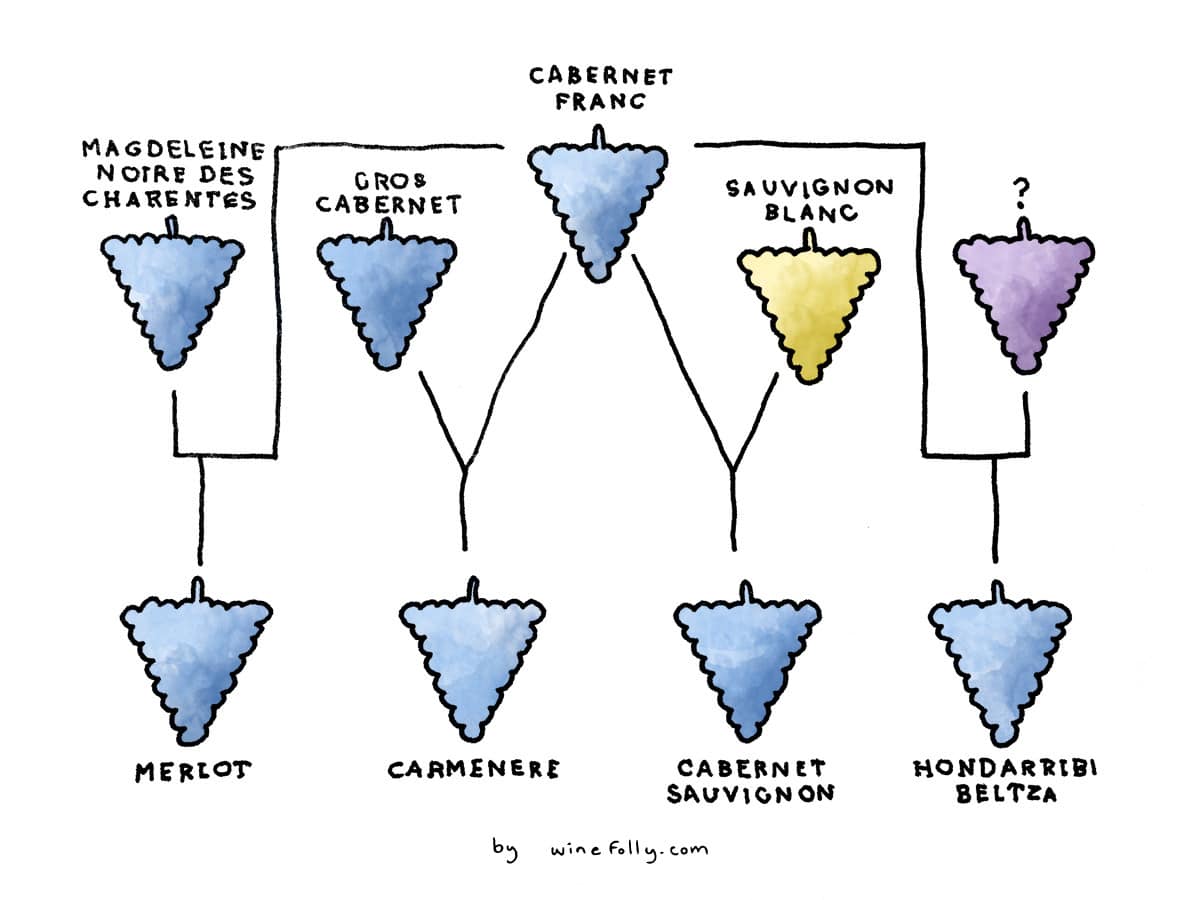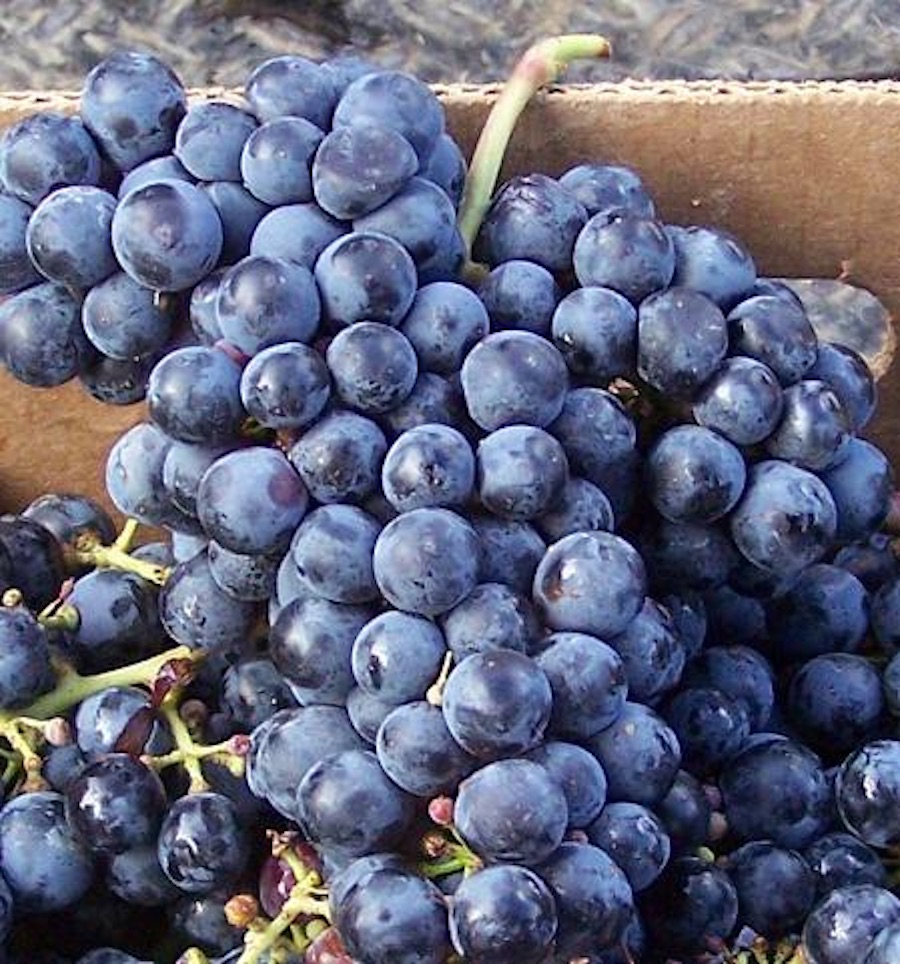We’ve talked on more than one occasion about Basque wines, from Irulegi to the Rioja Alavesa, from Navarre to the coastal txakolis, but in all honesty, we never thought we would end up writing this article.
On the website for the wine specialists Wine Mag, published in the US, we came across an article by Kathleen Willcox introducing five US vineyards making wine using the Cabernet Franc grape. And, surprise, surprise, we were amazed to see that this variety of grape seems to trace its ancestry back to the Basque Coast.
Cabernets are part of a family of vines called the Carmenets, which date back to a vine described in antiquity, the Atxeria, and which, according to some researchers (and as its name suggests), originates in the Basque Country. These wild vines grew all over what is today southwestern France, and ended up being cultivated in the Bordeaux region, which even Romans chroniclers considered wine country.
Some of the most well known varieties in the world belong to this family of Carmenets (as can be seen in that French-language Wikipedia article): Arrouya, Cabernet franc, Cabernet sauvignon (the result of crossing cabernet franc and sauvignon blanc), Carménère (from crossing cabernet franc and gros cabernet, which is also the source of Fer Servadou and Txakoli)), Castets, Fer servadou, Merlot (the crossing of cabernet franc and magdeleine Noire des Charentes), Merlot blanc (from the crossing of black merlot and folle blanche), Petit verdot, and Saint Macaire. (Be sure to also read the French versions of these articles, as they’re usually more complete.)
As is often said, a picture’s worth a thousand words, so we found this graphic at Wine Folly, explaining the relationship between cabernet franc and some of the other important varieties.


The references to the origins of these varieties appear in several articles about cabernet. We’ve already cited those Wikipedia articles (check out their translations into French, too!) above to explain how different types of grapes come from the cabernet franc variety. But now we’re going to cite the French one about cabernet franc to talk about Basque wines. There are two curious things to be found in this Wikipedia article: that the Spanish version is little more than a sketch, with few salient details, while the version in Basque is lacking some of the information found in the French article which we believe is very important.
We’re talking about the first few paragraphs, which talks about the wild varieties that spurred on local viticulture, unique in Western Europe, that is not due to Roman colonization. It also discusses the geographic and historical origins of that variety of grape; of how some parcels of those vines were saved from phylloxera, which explains both the existence of “old vines” (more than a century old!) in our country and the survival of the wild vines (exceptional in Europe). It also goes to explain how there is an identity of grape varieties on both sides of the Pyrenees and that these analogies allowed ampelographers PM Durquéty and P. Robert to define the existence of a “Basque wine type”, many types of which come from the carmenets family that we discussed above.
Perhaps for experts in wine and its history, this is all old hat. But it really caught our attention, truly.
We believe this story is not nearly as well known as it should be, and that’s why we’re bringing it to you here, along with some more articles we’ve found on the matter. The first is the Wine Mag article that lit our investigative fire. The French-language Wikipedia article about Basque wines is an absolute must. And finally, we’re including the description Jancis Robinson, a British journalist specializing in wine, gives of cabernet franc in her weekly Financial Times column.
These are just some of the many references about the Basque connection with cabernet that we’ve come across.
WineMag – 6/10/2020 – USA
From New York to Virginia, Five Cab Franc Producers You Should Know
Believed to have originated on the coast of Basque Country, Cabernet Franc was introduced to France’s Loire Valley more than 700 years ago. There, it was planted widely and gained favor locally for its nervy, easy-drinking pours.
(Follow) (Automatic translation)
Wikipedia – – France
Vignobles du Pays basque


Les vignobles du Pays basque (Euskal herriko mahastiak en basque) s’étendent, historiquement, aussi bien sur le Pays basque français (ou Iparralde) que sur le Pays basque espagnol (ou Hegoalde). Tous deux possèdent une longue tradition viticole, qui se traduit par une multitude d’appellations d’origine et des caractéristiques spécifiques à ces terroirs.
(Follow) (Automatic translation)
Jancis Robinson – – Great Britain
Cabernet Franc
I’m not a huge enthusiast of the sexual stereotyping of wines but even I can see that Cabernet Franc might be described as the feminine side of Cabernet Sauvignon. It is subtly fragrant and gently flirtatious rather than massively muscular and tough in youth. Because Cabernet Sauvignon has so much more of everything – body, tannin, alcohol, colour – it is often supposed to be necessarily superior, but I have a very soft spot indeed for its more charming and more aromatic relative, Cabernet Franc.
(Follow) (Automatic translation)
Last Updated on Dec 20, 2020 by About Basque Country





























